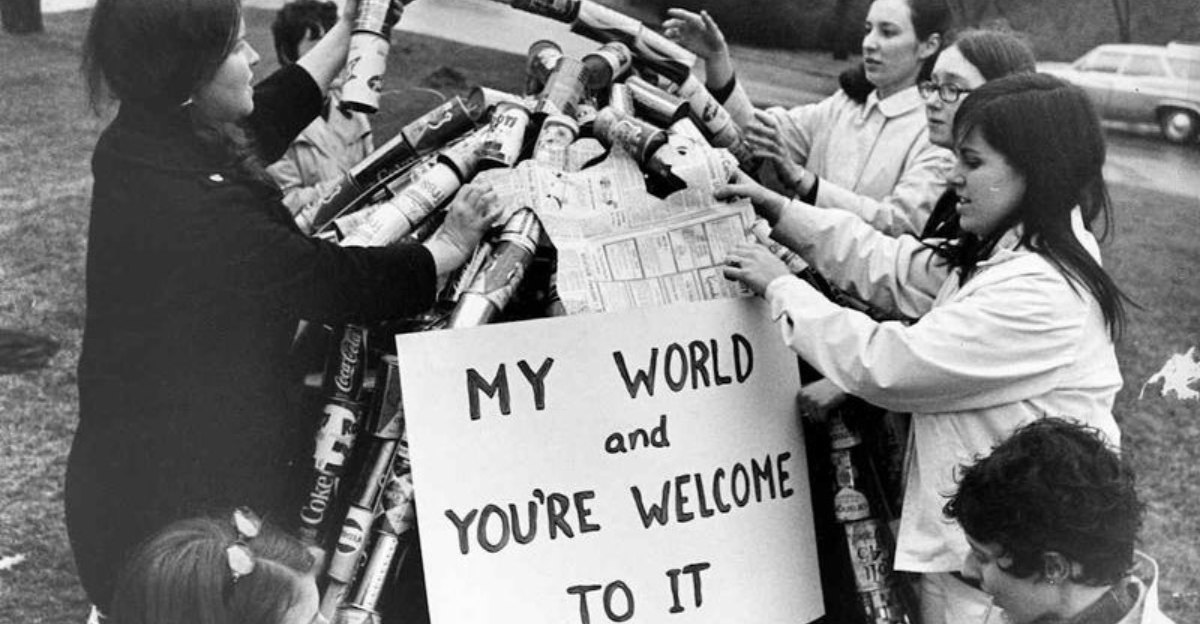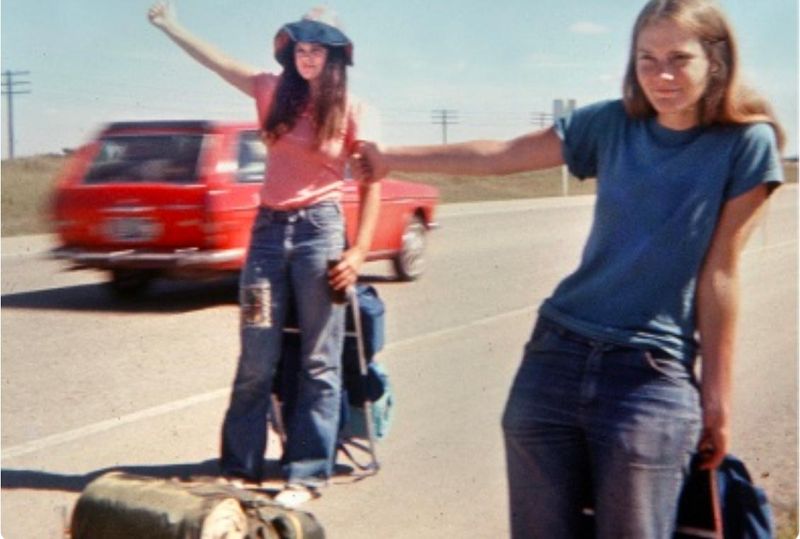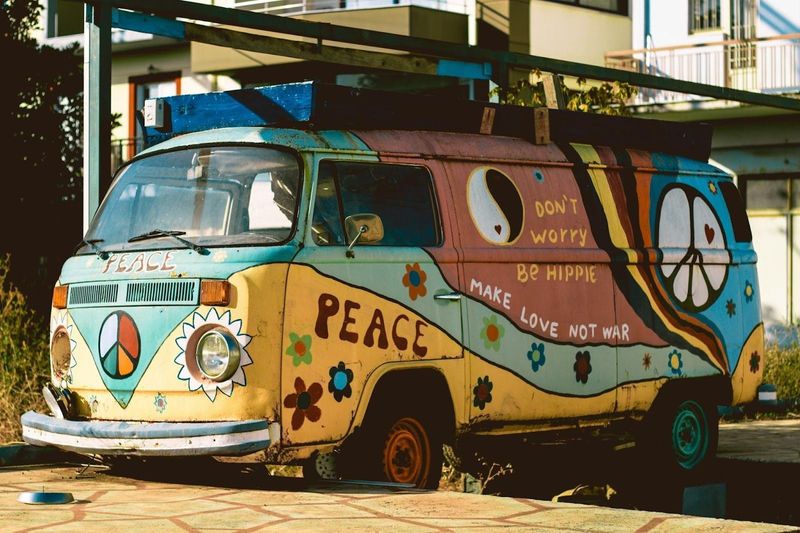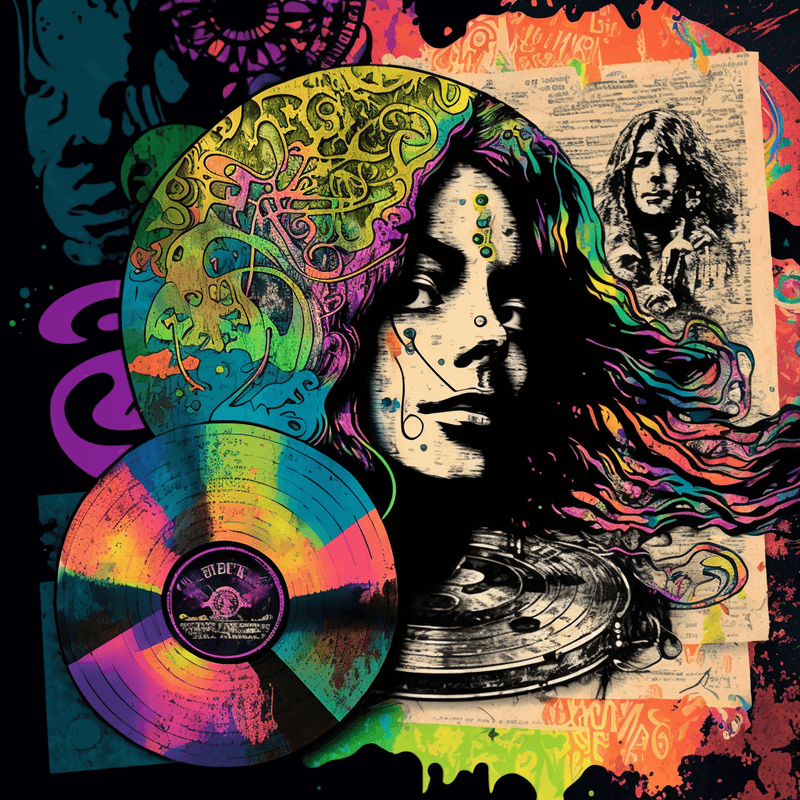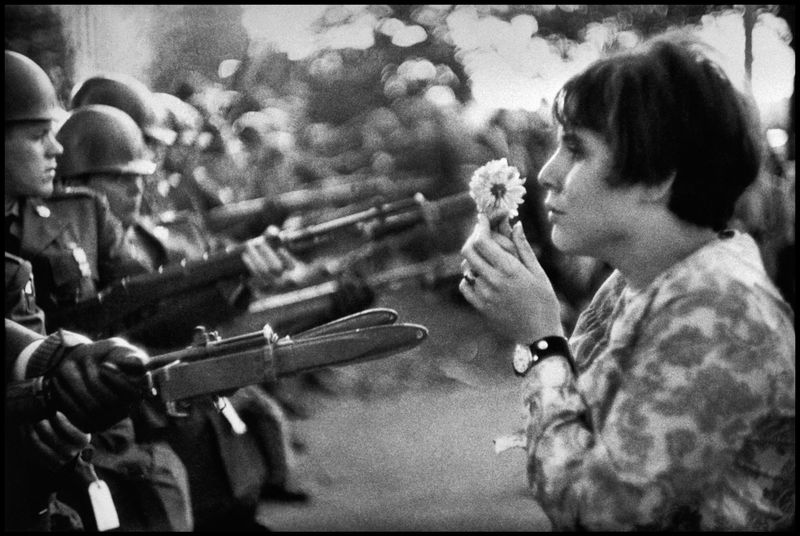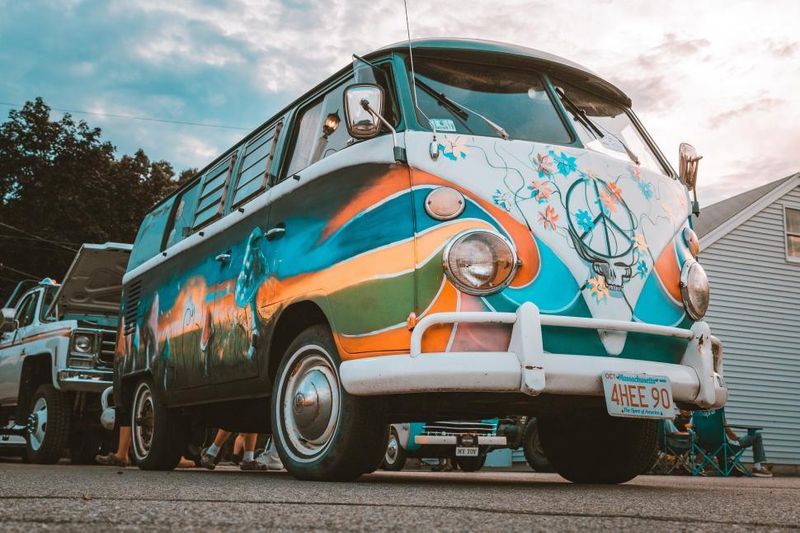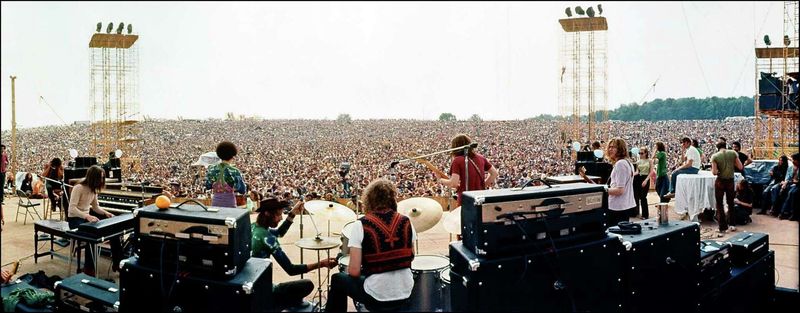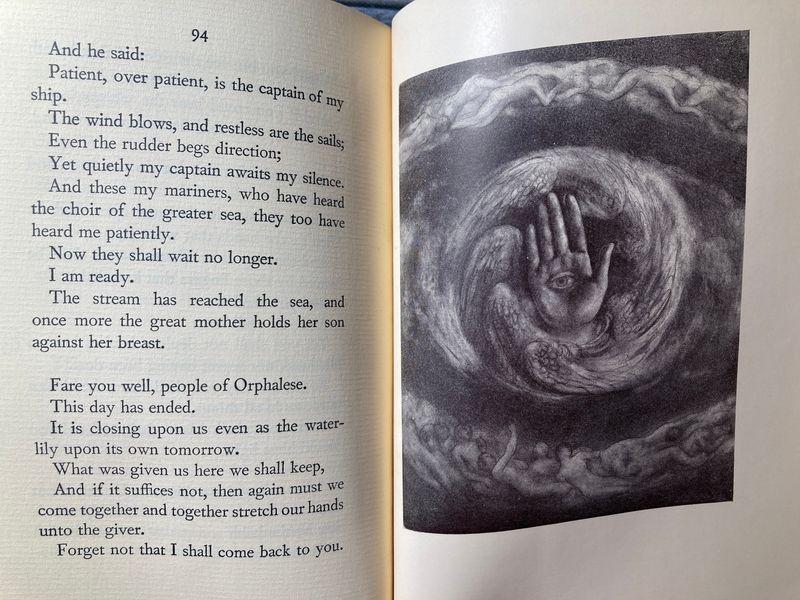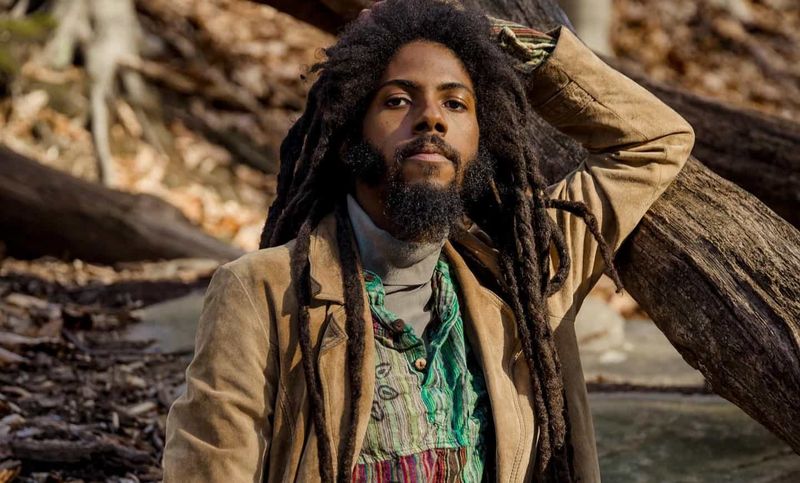The 1960s and ’70s were an era of revolution, rebellion, and radiant self-expression. If you were part of the counterculture scene, there’s a good chance you lived (and loved) the hippie lifestyle. From flower crowns to sit-ins, here’s how to tell if you were truly tuned in, turned on, and dropped out.
1. You Wore Bell-Bottoms with Pride
Fashion statements don’t get more iconic than those wide-legged wonders that expanded from knee to ankle. Bell-bottoms weren’t just pants – they were liberation from straight-legged conformity!
Walking down the street, you’d feel the fabric swish against your ankles, creating a rhythm that matched whatever Jimi Hendrix tune played in your head. The wider the flare, the more authentic your hippie credentials.
Paired with platform shoes and a fringed vest, your silhouette announced your allegiance to the counterculture before you even opened your mouth.
2. You Hitched Rides Without Thinking Twice
Thumb extended skyward, backpack slung over one shoulder, and a cardboard sign with your destination scrawled in marker – the original travel app. Hitchhiking wasn’t just transportation; it was a philosophy about trust and human connection.
Every car that stopped was a new adventure, a fresh conversation, sometimes even a friendship that lasted beyond the journey. Gas money was optional, but stories were mandatory currency.
The open road stretched before you like a promise, and strangers became your temporary tribe as you made your way to the next festival, commune, or wherever the universe guided you.
3. You Attended a Be-In or Sit-In
Sprawled on grass with hundreds of flower-crowned kindred spirits, you were changing the world one peaceful gathering at a time. These weren’t just protests – they were living demonstrations of the society you wanted to create.
Guitars strummed while speeches about peace and equality echoed across parks and college campuses. The Human Be-In at Golden Gate Park or anti-war demonstrations at Berkeley became your political classroom.
Bodies painted with peace signs and hearts, you linked arms with strangers who shared your vision of a world where love trumped war and understanding defeated hatred.
4. You Lived in or Visited a Commune
Shared chores, shared meals, shared ideals – commune life stripped away capitalist notions of private property. Morning might find you tending the organic garden while your commune-mates constructed a geodesic dome or prepared communal breakfast.
Decisions happened in circles, not hierarchies. Children belonged to everyone, running free while adults discussed philosophy under starlight.
Whether you stayed for years or just dropped in for a transformative weekend, communes represented the ultimate rejection of suburban values. The address might have been vague (“the rainbow farm past the second creek”), but the sense of belonging was crystal clear.
5. You Wore Tie-Dye (and Probably Made It Yourself)
Rubber bands, buckets of dye, and white cotton transformed into wearable psychedelic art under your creative hands. Each swirl and spiral told a story – no two pieces ever exactly alike.
The neighborhood knew you were coming by the rainbow of colors you wore. Tie-dye wasn’t just fashion; it was rebellion against mass-produced clothing and celebration of individual expression.
Your fingers stayed stained for days after a dyeing session, badges of honor in the craft. Friends brought their plain shirts to you, knowing you’d send them home with wearable masterpieces that announced their free-spirited allegiance.
6. You Used the Word “Groovy” Non-Ironically
Language evolved in the flower power era, and “groovy” floated from your lips as naturally as breathing. Sunsets weren’t beautiful – they were groovy. Music wasn’t good – it was groovy. Even uncomfortable situations could turn groovy with the right attitude.
Your vocabulary expanded with words like “far out,” “dig it,” and “right on” that confused your parents but connected you instantly with fellow travelers on the hippie path. Communication wasn’t just about words but shared understanding.
When something truly blew your mind, only “groovy” could capture that perfect alignment of cosmic energy and earthly pleasure.
7. You Listened to Albums Start to Finish… on Vinyl
Music wasn’t background noise – it was ceremony. Carefully sliding vinyl from its sleeve, you’d place the needle precisely at the edge, then lie back on floor cushions as the first notes filled the room.
Album covers became art to study while absorbing every lyric, every guitar solo. The Grateful Dead, Jefferson Airplane, and Janis Joplin weren’t just musicians but prophets speaking directly to your soul.
Flipping the record midway through was the only acceptable interruption to this sacred listening experience. Your collection, alphabetized or categorized by vibes, was your most prized possession – each scratch and pop adding character to the sonic journey.
8. You Marched for Peace
Feet sore but spirit soaring, you walked miles with handmade signs proclaiming “Make Love Not War.” The Vietnam conflict wasn’t some distant news story – it was a moral emergency demanding your physical presence.
Chanting in unison with thousands created a powerful energy that transcended individual voices. Sometimes you faced riot police or angry counter-protesters, but your commitment to non-violence never wavered.
Flowers tucked into soldier’s rifle barrels became the ultimate symbol of your movement. Each march reinforced your belief that ordinary people linking arms could change the course of history through the sheer power of showing up.
9. You Took a Road Trip in a VW Bus
The iconic VW microbus – your home on wheels painted with flowers, peace signs, or cosmic scenes. Every dent and rust spot told stories of adventures from Woodstock to Big Sur.
Inside, the transformation was magical: cushions on the floor, curtains made from Indian fabric, and a tiny kitchenette for making tea. Breakdowns were just opportunities to meet locals and practice your mechanical skills.
Maps were suggestions rather than rules as you followed your intuition down back roads. The journey mattered more than the destination – and with the right companions, cramped quarters became the most liberating space you’d ever known.
10. You Practiced Free Love
Relationship rules got rewritten as you explored connections beyond traditional boundaries. “Free love” wasn’t about mindless pleasure but liberation from possessiveness and outdated moral codes.
Jealousy was something to be examined, not indulged. Open relationships and communal living created space for multiple forms of intimacy – physical, emotional, spiritual – without the constraints of conventional monogamy.
For some, it was a beautiful experiment in human connection; for others, a complicated tangle of emotions. Either way, you were pioneering new relationship models that challenged the establishment’s grip on love and sexuality.
11. You Smelled Like Patchouli (and Maybe a Little Weed)
The earthy, musky scent announced your presence before you entered a room. Patchouli wasn’t just perfume but a statement of natural living and rejection of manufactured fragrances.
Sweet hints of cannabis might mingle with the essential oil, creating your signature aroma. Parents wrinkled their noses while fellow travelers recognized you as part of the tribe through this olfactory signal.
Incense burned constantly in your living space, adding sandalwood and nag champa to your personal bouquet. These weren’t just pleasant smells but portals to altered consciousness – sensory companions to your journey toward enlightenment.
12. You Went to Woodstock (or Wished You Had)
Three days of peace and music became the generation-defining moment – 400,000 souls gathered in a muddy farm field for the ultimate expression of counterculture values. If you were there, you still speak of it with reverence.
Rain transformed the festival into a mud bath, but discomfort faded against the backdrop of Hendrix’s “Star-Spangled Banner” and the shared euphoria of being present for history. Food shortages became opportunities for sharing; strangers became family.
Even if you only experienced it through stories and recordings, Woodstock represented the pinnacle of what your movement could achieve – a temporary utopia proving peaceful coexistence was possible.
13. You Read or Quoted from “The Prophet” by Kahlil Gibran
Dog-eared copies of spiritual texts filled your backpack, with Gibran’s poetic wisdom at the top of the stack. These weren’t casual reads but life manuals that guided your approach to love, work, and community.
Hermann Hesse’s “Siddhartha” transported you to ancient India while speaking directly to your modern quest for meaning. Eastern philosophy wasn’t exotic decoration but practical wisdom for navigating a materialistic society.
You’d recite passages around campfires or during deep conversations, the words flowing as naturally as your own thoughts. These books weren’t on your shelf for show – their pages bore coffee stains and margin notes from countless readings.
14. You Believed in the Power of Crystals and Chakras
Long before wellness became mainstream, you carried rose quartz for love and amethyst for spiritual protection. Crystals weren’t accessories but tools for channeling energy and promoting healing.
Your understanding of chakras came through meditation and yoga practice, not trendy Instagram posts. Each colored energy center represented different aspects of consciousness – knowledge passed down through ancient traditions you studied seriously.
Friends came to you with headaches or heartaches, knowing you’d recommend the right stone or breathing technique. Western medicine seemed limited compared to your holistic approach that treated body, mind, and spirit as inseparable elements of health.
15. You Grew Your Hair Out (or Didn’t Shave It at All)
Hair became political statement – every uncut inch a rejection of military-industrial conformity. Men with flowing locks challenged gender norms while women tossing razors embraced natural beauty against Madison Avenue standards.
Parents and authorities viewed your untamed mane with suspicion. “Get a haircut” wasn’t just about appearance but controlling free expression and enforcing social compliance.
Braids, beads, and flowers adorned these crowning glories. Hair care rituals shifted from chemical products to natural oils and rainwater washes. Your locks weren’t just style but living symbols of freedom growing visibly longer with each passing month of liberation.
16. You Decorated Your Space with Beads, Tapestries, and Lava Lamps
Walking into your room was like entering another dimension. Indian tapestries transformed drab walls into vibrant portals while beaded curtains marked thresholds between spaces – physical and psychological.
Lava lamps bubbled hypnotically, casting otherworldly shadows as incense smoke curled through the air. Mattresses often sat directly on floors, surrounded by floor pillows for impromptu philosophical discussions.
Blacklight posters revealed hidden patterns when the right bulb illuminated them. Every object served both functional and spiritual purposes – your external environment reflecting the colorful, boundary-dissolving landscape of your inner world.
17. You Believed You Could Change the World
Beyond fashion and music lay the beating heart of hippie culture – radical optimism about humanity’s potential. You genuinely believed love could overcome war, cooperation could replace competition, and consciousness could evolve beyond materialism.
Cynicism was the enemy. Each small act – from growing organic food to teaching children compassion – contributed to the peaceful revolution you envisioned.
Despite disappointments and mainstream mockery, your idealism persisted. Perhaps the most authentic hippie credential wasn’t what you wore or where you went, but this unshakable faith that ordinary people working together could create the just, sustainable, loving world you glimpsed in your most beautiful dreams.
